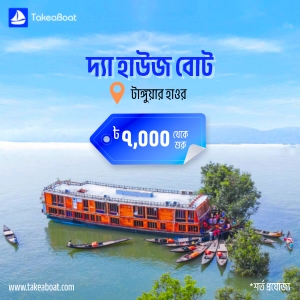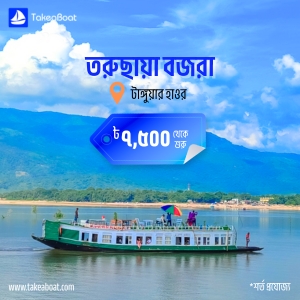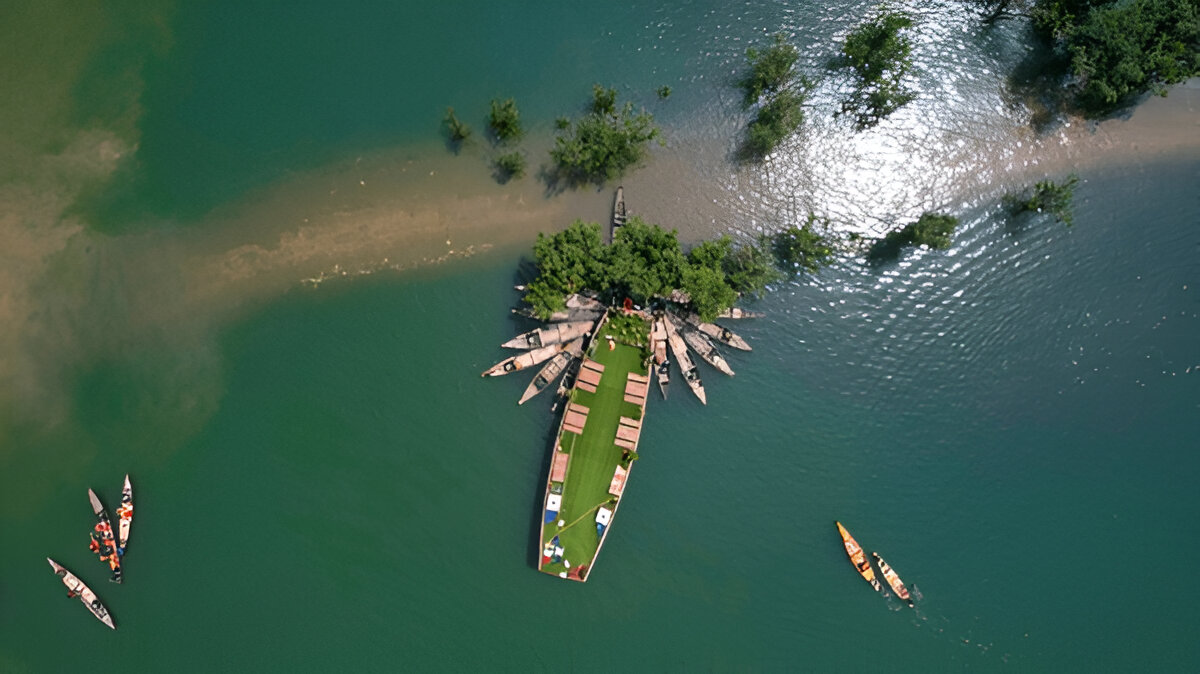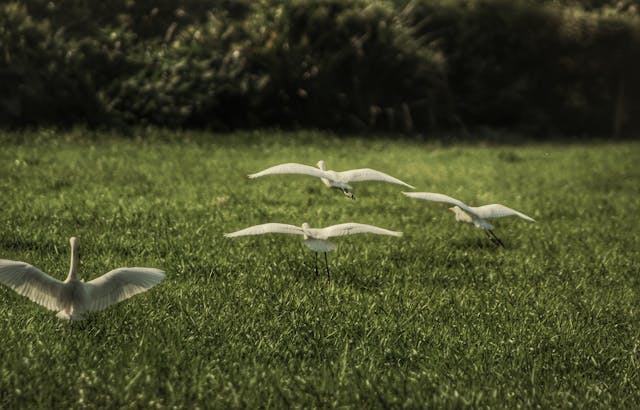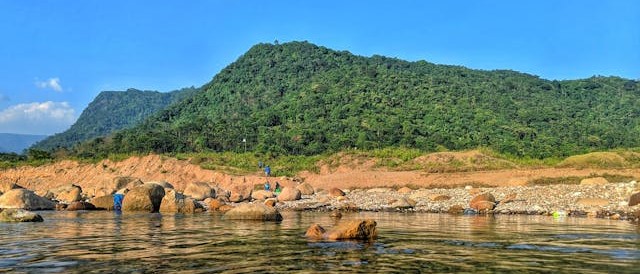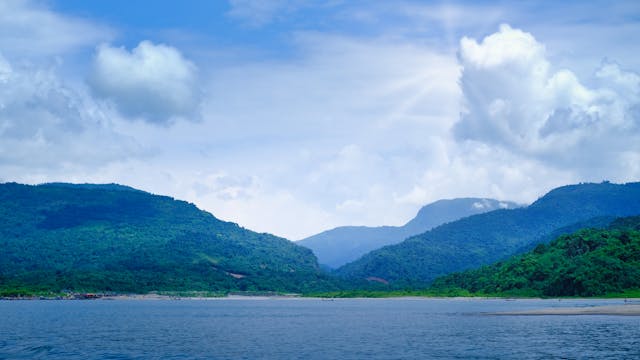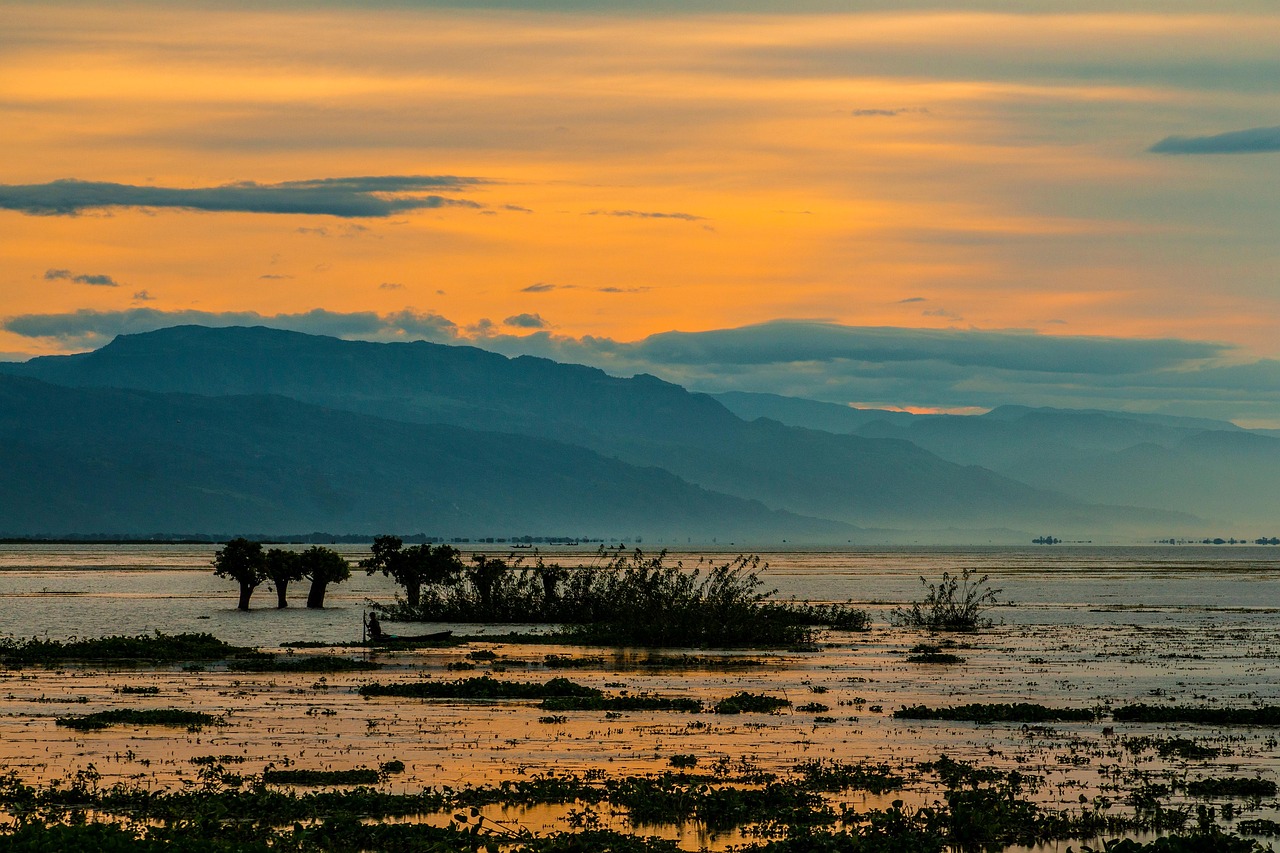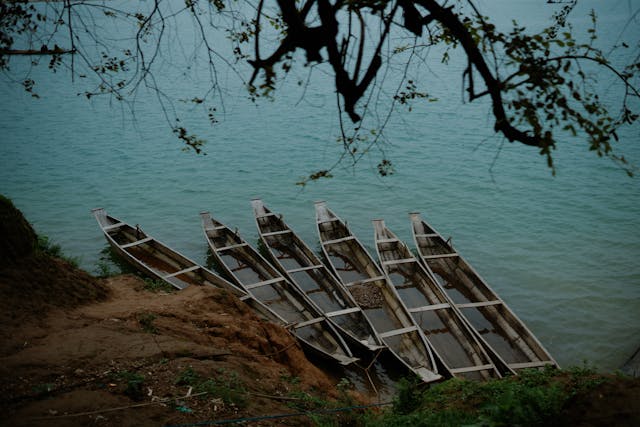Tanguar Haor Boat Types Explained: Which One is Right for You?
Tanguar Haor Boat Types Explained: Which One is Right for You?
Picture yourself gliding through the serene waters of Tanguar Haor, a breathtaking wetland in Bangladesh, surrounded by endless horizons and the calls of migratory birds. This Ramsar site in Sunamganj, Sylhet Division, is a paradise for eco-travelers, but to truly experience its magic, you need the right boat. Boats are the lifeblood of travel in Tanguar Haor, as the vast freshwater expanse transforms into an inland sea during the monsoon. Choosing the perfect vessel can make or break your adventure, whether you’re a birdwatcher, photographer, or simply seeking tranquility.
Table of Contents
- Tanguar Haor Boat Types Explained: Which One is Right for You?
- Why Boats Are Essential for Exploring Tanguar Haor
- Traditional Wooden Boats: The Heart of Tanguar Haor
- Country Boats with Canopies: Comfort Meets Tradition
- Engine-Powered Boats: Speed and Convenience
- Flat-Bottomed Fishing Boats: A Glimpse into Local Life
- Tips for Choosing the Right Boat at Tanguar Haor
- How to Rent a Boat at Tanguar Haor
- Challenges of Boating in Tanguar Haor and How to Prepare
- Frequently Asked Questions (FAQs) About Tanguar Haor Boat Types
- Conclusion: Pick Your Perfect Boat for Tanguar Haor
In this guide, we’ll break down the various boat types available at Tanguar Haor, explaining their features, benefits, and ideal uses. From traditional wooden boats to modern alternatives, we’ll help you decide which one suits your travel style and needs. Let’s dive into the world of Tanguar Haor boating and find the perfect ride for your eco-journey!
Why Boats Are Essential for Exploring Tanguar Haor
Tanguar Haor, often called the “sea of Sylhet,” spans over 9,500 hectares during the rainy season, making boats the only practical way to explore this wetland wonder. Roads and footpaths disappear under water, and local communities rely on these vessels for daily life—fishing, commuting, and trading. For travelers, boats offer access to hidden corners of the haor, from birdwatching spots to remote villages, while providing a unique perspective on its natural beauty.
Choosing the right boat isn’t just about transportation; it’s about comfort, safety, and enhancing your connection with this ecological gem. Whether you’re planning a short day trip or an extended exploration, understanding the boat types at Tanguar Haor is key to a memorable experience. Ready to find out which one fits your adventure?
Traditional Wooden Boats: The Heart of Tanguar Haor
Features and Design
Traditional wooden boats, locally known as “nouka,” are the most iconic vessels in Tanguar Haor. Crafted by local artisans using timber like sal or teak, these boats are long and narrow with a curved bow, designed to glide smoothly through shallow and deep waters. They typically range from 15 to 30 feet in length and are powered by oars or small engines.
Best For
- Cultural Immersion: These boats are often operated by local fishermen who double as guides, sharing stories and insights about life in the haor.
- Budget Travelers: Wooden boats are the most affordable option, with rental costs starting at around 500-1000 BDT (approximately $5-10 USD) per day.
- Short Trips: Ideal for half-day or day-long excursions due to their simplicity and lack of amenities.
Pros and Cons
- Pros: Eco-friendly, authentic experience, supports local craftsmanship.
- Cons: Limited shade or seating comfort; not ideal for long journeys or rough weather.
If you’re looking to connect with the soul of Tanguar Haor, a traditional wooden boat offers an unmatched, rustic charm. Have you ever imagined rowing through a wetland with a local guide narrating tales of the land?
Country Boats with Canopies: Comfort Meets Tradition
Features and Design
A step up from basic wooden boats, country boats with canopies (often called “shampan” in some regions) feature a bamboo or cloth roof for shade. These boats are similar in size and shape to traditional nouka but are designed with traveler comfort in mind. Some even have makeshift seating or cushions for a more relaxed ride.
Best For
- Families or Small Groups: The canopy provides protection from sun and light rain, making it suitable for longer trips with loved ones.
- Photographers: The stable design and shade allow for better focus on capturing the haor’s stunning landscapes and wildlife.
- Day Trips: Perfect for 4-6 hour explorations without feeling exposed to the elements.
Pros and Cons
- Pros: Added comfort, better weather protection, still affordable (around 800-1500 BDT or $8-15 USD per day).
- Cons: Slightly less maneuverable in narrow channels; canopy may obstruct some views.
For eco-travelers seeking a balance between authenticity and ease, this boat type at Tanguar Haor is a fantastic choice. Doesn’t a shaded ride through serene waters sound like the perfect way to explore?
Engine-Powered Boats: Speed and Convenience
Features and Design
Engine-powered boats are modern adaptations of traditional designs, fitted with small outboard motors. These vessels are often made of wood or lightweight metal and can cover larger distances quickly. They vary in size, accommodating 4 to 10 passengers, and some include basic seating.
Best For
- Time-Conscious Travelers: Ideal for those with limited time who want to see more of Tanguar Haor in a shorter period.
- Long-Distance Exploration: Great for reaching far-off birdwatching spots or villages deep within the wetland.
- Group Travel: Larger engine boats can carry more people, making them cost-effective for bigger parties.
Pros and Cons
- Pros: Faster travel, covers more ground, relatively stable.
- Cons: Noisier, which may disturb wildlife or the peaceful vibe; higher rental cost (1500-3000 BDT or $15-30 USD per day); less eco-friendly due to fuel use.
If speed and efficiency are priorities for your Tanguar Haor adventure, an engine-powered boat might be your go-to. But are you willing to trade some tranquility for convenience?
Flat-Bottomed Fishing Boats: A Glimpse into Local Life
Features and Design
Flat-bottomed fishing boats are smaller, sturdy vessels used primarily by local fishermen. Made of wood and designed for stability in shallow waters, these boats are perfect for navigating the grassy patches and narrow channels of Tanguar Haor during the dry season. They usually accommodate 2-4 people and are rowed manually.
Best For
- Solo Travelers or Couples: Their small size makes them intimate and ideal for a personal experience.
- Dry Season Visits: Best suited for March to May when water levels are lower, exposing more land.
- Wildlife Enthusiasts: Their quiet operation allows for close encounters with birds and aquatic life without startling them.
Pros and Cons
- Pros: Authentic, quiet, highly maneuverable in tight spaces.
- Cons: Minimal comfort, no protection from weather, not suitable for deep waters or monsoon season.
Choosing a fishing boat lets you experience Tanguar Haor as the locals do. Can you picture yourself drifting silently, spotting a rare bird just a few feet away?
Tips for Choosing the Right Boat at Tanguar Haor
Selecting the best boat for your trip to Tanguar Haor depends on several factors. Here are some practical tips to guide your decision:
- Consider Your Group Size: Solo travelers or couples might prefer smaller fishing boats, while families or groups should opt for larger canopy or engine-powered boats.
- Plan for the Season: Monsoon season (June-October) calls for sturdier boats with shade, while dry season (March-May) suits flat-bottomed vessels for shallow areas.
- Define Your Purpose: Birdwatching and photography benefit from quiet, stable boats like traditional nouka, whereas quick sightseeing favors engine-powered options.
- Budget Wisely: Traditional boats are the cheapest, while engine boats cost more due to fuel and capacity. Negotiate fares upfront with boatmen in Sunamganj.
- Prioritize Safety: Ensure the boat is in good condition, and always carry life jackets if possible, especially during the monsoon.
By matching the boat type to your needs, you’ll ensure a safe and enjoyable exploration of this Bangladesh wetland. Which factor matters most to you—comfort, cost, or connection to nature?
How to Rent a Boat at Tanguar Haor
Renting a boat at Tanguar Haor is straightforward but requires a bit of planning. Most boats are available for hire in Sunamganj, the nearest town to the haor. Head to the local market or ghat (dock) areas, where boatmen offer their services. Here’s how to go about it:
- Travel to Sunamganj: Reach Sunamganj from Sylhet (2-3 hours by bus or private car) after arriving in Sylhet from Dhaka via air, train, or road.
- Negotiate Rates: Speak with local boatmen and agree on a price before starting your trip. Costs vary based on boat type and duration (500-3000 BDT or $5-30 USD per day).
- Hire a Guide: Many boatmen act as guides, providing insights into the haor’s ecology and culture. This is highly recommended for first-time visitors.
- Pack Essentials: Bring water, snacks, sunscreen, and a hat, as amenities on the haor are limited.
Renting directly from locals not only saves money but also supports their livelihood. Isn’t it rewarding to know your trip benefits the community?
Challenges of Boating in Tanguar Haor and How to Prepare
While boating in Tanguar Haor is a magical experience, it comes with challenges. The remote location means limited facilities, and weather conditions can change rapidly, especially during the monsoon. Here’s how to prepare:
- Weather Awareness: Check forecasts and avoid trips during heavy rain or storms, which can make waters rough.
- Communication: Cell service may be spotty; inform someone of your travel plans before heading out.
- Physical Readiness: Boat rides can be long and bumpy; ensure you’re comfortable with extended time on water.
- Eco-Consciousness: Avoid littering and respect the environment to preserve the haor’s pristine beauty.
Preparation turns potential obstacles into manageable aspects of your adventure. Are you ready to navigate the waters of Tanguar Haor with confidence?
Frequently Asked Questions (FAQs) About Tanguar Haor Boat Types
1. What types of boats are available at Tanguar Haor?
At Tanguar Haor, you can find traditional wooden boats (nouka), country boats with canopies, engine-powered boats, and flat-bottomed fishing boats. Each type serves different purposes based on comfort, speed, and season.
2. Which boat is best for birdwatching at Tanguar Haor?
Traditional wooden boats or flat-bottomed fishing boats are ideal for birdwatching. Their quiet operation ensures you don’t disturb wildlife, allowing for closer encounters with migratory birds.
3. How much does it cost to rent a boat at Tanguar Haor?
Boat rental costs at Tanguar Haor vary: traditional wooden boats start at 500-1000 BDT ($5-10 USD) per day, canopy boats cost 800-1500 BDT ($8-15 USD), and engine-powered boats range from 1500-3000 BDT ($15-30 USD). Negotiate rates in Sunamganj before your trip.
4. Are boats safe for exploring Tanguar Haor?
Yes, boats are generally safe for exploring Tanguar Haor if you choose a well-maintained vessel and travel with an experienced boatman. Always check weather conditions, carry life jackets if possible, and avoid trips during storms, especially in monsoon season.
5. What’s the best boat for families visiting Tanguar Haor?
Country boats with canopies are best for families. They offer shade and some seating comfort, protecting against sun and light rain, making longer trips more enjoyable for kids and adults alike.
6. How do I rent a boat for Tanguar Haor?
To rent a boat, travel to Sunamganj (near Tanguar Haor) from Sylhet. Visit the local market or ghat, negotiate rates with boatmen (500-3000 BDT per day), and hire a local guide if needed. Bring essentials like water and sunscreen for the trip.
7. Can I use engine-powered boats for an eco-friendly trip to Tanguar Haor?
While engine-powered boats are faster and convenient, they’re less eco-friendly due to noise and fuel use. For a sustainable trip, opt for traditional wooden or fishing boats rowed manually to minimize impact on the wetland’s ecosystem.
Conclusion: Pick Your Perfect Boat for Tanguar Haor
Exploring Tanguar Haor by boat is an experience that blends adventure, nature, and culture into one unforgettable journey. Whether you choose the rustic charm of a traditional wooden nouka, the comfort of a canopy boat, the speed of an engine-powered vessel, or the intimacy of a fishing boat, each offers a unique way to connect with this Bangladeshi wetland. By understanding the different boat types at Tanguar Haor and matching them to your travel goals, you can ensure a safe, enjoyable, and meaningful eco-adventure.
So, which boat will you pick for your trip to Tanguar Haor? Start planning today, and get ready to sail through one of Bangladesh’s most stunning natural wonders. Your perfect wetland escape awaits—how will you explore it?
Read Why Tanguar Haor Should Be on Every Eco-Traveler’s Bucket List
Follow us on Facebook and Instagram for more travel tips and updates!

Shafat Mahmud Khan
Related content
Interdum et malesuada fames


